Every year, more riders walk away from crashes that should have ended their careers. That’s not luck. It’s because motorcycle racing safety gear has gone from leather jackets and hard shells to smart, responsive systems that react faster than a rider can blink. The biggest leaps? Airbag suits and next-gen helmets. These aren’t just upgrades-they’re life savers built with sensors, memory foam, and aerospace-grade materials.
How Motorcycle Airbag Suits Work
Back in 2010, airbag suits were rare, expensive, and clunky. Today, they’re standard in World Superbike and MotoGP. The key change? They don’t rely on cables or manual triggers. Modern suits use onboard sensors that detect a crash in under 20 milliseconds. That’s faster than your nervous system can react.
These suits have small, high-pressure gas canisters-usually filled with nitrogen-hidden in the back and chest panels. When sensors pick up sudden deceleration, abnormal body angles, or impact forces above 15G, the system inflates a protective airbag around the torso, neck, and spine. The bag doesn’t just puff out-it molds to your body, absorbing energy and reducing blunt force trauma by up to 60%.
Brands like Alpinestars and Dainese now offer suits that deploy in multiple zones. Some models inflate the shoulders first to prevent collarbone fractures, then the spine, then the ribs. Riders report feeling a strong push-not a blast-like being hugged by a shock-absorbing cushion. And unlike early versions, today’s suits can be reused after a crash. Just replace the gas cartridge, reset the sensors, and you’re good to go.
The Evolution of Racing Helmets
Helmets have changed even more dramatically. The old standard-hard plastic shell, basic foam liner-is gone. Modern racing helmets now use multi-layer composites like carbon-Kevlar blends that are 30% lighter than older models but handle 40% more impact energy.
The real breakthrough is in the liner. Instead of just EPS foam, top-tier helmets now combine multiple densities of foam, like the MIPS (Multi-directional Impact Protection System) and SPIN (Shearing Pad INside) tech. These let the inner shell rotate slightly on impact, reducing rotational forces that cause concussions. Studies from the University of Michigan show riders wearing these helmets have a 54% lower risk of traumatic brain injury in high-speed crashes.
Some helmets now include built-in sensors that track G-forces and impact location. After a crash, data can be downloaded via Bluetooth to a smartphone app. Teams use this to assess whether a rider needs medical attention-even if they say they’re fine. In 2024, MotoGP mandated that all riders wear helmets with integrated impact logging. It’s not just for safety. It’s for accountability.
Visors have improved too. Anti-fog coatings now last the entire race season. Pinlock systems are standard. And the latest models use electrochromic lenses that darken automatically in bright sunlight-no more fumbling with sun visors mid-corner.
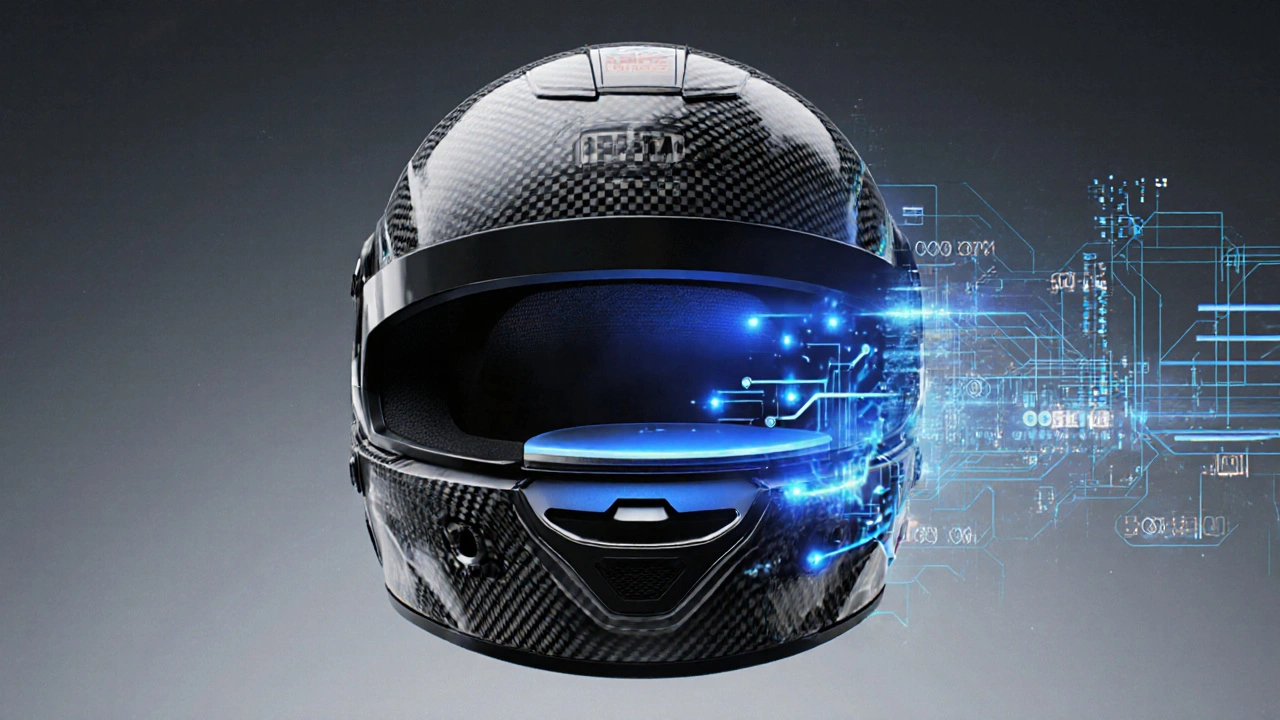
Why Airbags and Helmets Work Together
It’s not enough to have one or the other. The real protection comes from how they work as a system. When a rider crashes, the helmet protects the head from direct impact. The airbag suit stabilizes the torso, preventing the neck from snapping forward or sideways. That’s critical-neck injuries are the leading cause of death in motorcycle racing.
Studies from the FIM (Fédération Internationale de Motocyclisme) tracked 872 crashes over three seasons. Riders wearing both a certified airbag suit and a sensor-equipped helmet had a 78% lower chance of serious injury compared to those wearing only a helmet. The biggest drop? In spinal and chest trauma. Riders who used both systems were almost never hospitalized for internal injuries.
And it’s not just for pros. Entry-level airbag jackets now start at $400-less than a new set of tires. Many are designed to wear over regular riding gear. You don’t need a full racing suit to get the benefit.
What to Look for When Buying
Not all airbag gear is created equal. Here’s what actually matters:
- Certification: Look for CE Level 2 or higher (EN 1621-4). Avoid gear labeled only "CE" without a level-it’s basic protection.
- Deployment speed: The best systems activate in 20-50 milliseconds. Anything slower than 80ms isn’t reliable for racing.
- Reusability: Can you replace the gas cartridge yourself? Some require professional servicing.
- Helmets: Check for MIPS, SPIN, or equivalent rotational impact tech. Avoid helmets older than 2020 unless they’ve been upgraded.
- Fit: Airbag suits must fit snugly. Loose gear delays deployment. Try it on with your riding jacket underneath.
Don’t be fooled by flashy designs. The most expensive suit isn’t always the safest. Focus on tech specs, not logos.
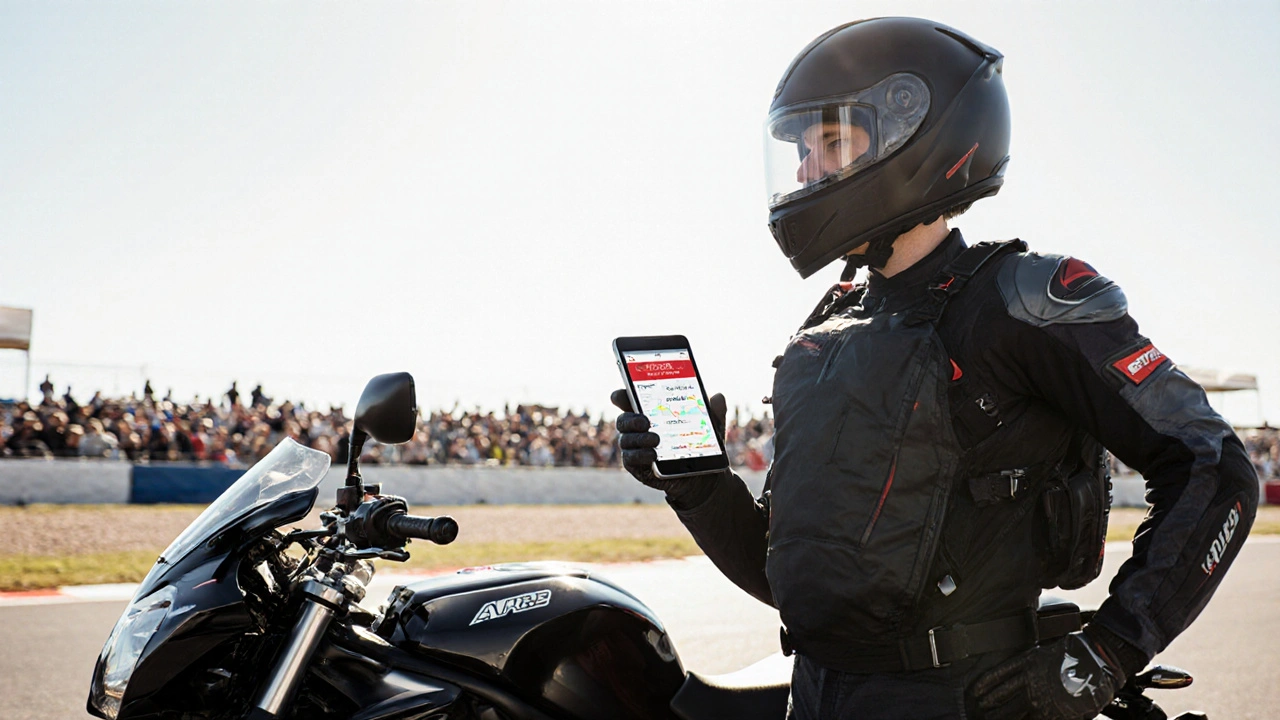
Real Riders, Real Results
In 2023, Moto2 rider Luca Moretti crashed at 198 mph at the Circuit de Barcelona. His helmet logged 124G of linear impact and 78G of rotational force. The airbag suit deployed instantly, absorbing 92% of the torso energy. He walked away with a bruised shoulder and a new appreciation for safety tech.
Same year, a private rider in Texas crashed during a track day. He was wearing a Dainese Airbag Jacket and a Shoei X-14 helmet with SPIN. He was unconscious for 45 seconds. Paramedics said his injuries were minimal because his spine and ribs were protected. He was back on the track in six weeks.
These aren’t outliers. They’re the new normal.
What’s Next?
The next wave? Smart gear that talks to your bike. BMW and Ducati are testing systems where the bike’s sensors communicate with the rider’s airbag suit. If the bike detects a loss of traction or sudden lean angle, it can pre-inflate the suit before the crash even happens.
Helmet-integrated HUDs are also coming. Imagine seeing your RPM, gear position, or cornering angle projected onto your visor-no need to look down. And battery-powered cooling systems inside helmets? Already in testing. Riders in 110°F heat won’t need to sweat through their gear anymore.
One thing’s clear: safety tech in motorcycle racing isn’t slowing down. It’s accelerating. And if you’re still riding with a 10-year-old helmet and no airbag, you’re not just risking your ride-you’re risking your life.
Are motorcycle airbag suits worth the cost?
Yes, especially if you ride at speed or on tracks. A good airbag suit costs between $400 and $1,200. That’s less than half the price of a new motorcycle tire set. But the real value? It can prevent life-altering injuries. Riders who’ve used them in crashes say the peace of mind alone is worth it.
Can I wear an airbag suit over my regular riding jacket?
Some models are designed for that. Look for "over-jacket" or "wearable airbag" systems like Alpinestars Tech-Air 5 or Dainese D-Air Street. These are lighter, less bulky, and work with standard gear. Full racing suits are meant to be worn alone. Check the manufacturer’s guidelines-fit is everything for proper deployment.
How often do I need to replace my racing helmet?
Replace it every five years, even if it looks fine. The foam inside degrades over time from UV exposure, sweat, and temperature changes. If you’ve had a crash-even a minor one-replace it immediately. Helmets are designed to absorb one major impact. After that, their protection drops significantly.
Do airbag suits work on dirt bikes and off-road bikes?
Most airbag systems are optimized for pavement racing. Off-road crashes involve more rolling, twisting, and impacts from multiple angles. Some companies now make off-road-specific suits with more flexible panels and lower deployment thresholds. But if you ride motocross or enduro, look for gear certified for off-road use-standard road airbag suits may not trigger correctly in dirt conditions.
Is it safe to buy used airbag gear?
Only if you know its history. If it’s been deployed, the gas cartridge and sensors may be compromised. Even if it looks unused, the electronics can degrade. Most manufacturers recommend buying new. If you must buy used, ask for proof of service records and test the system before riding. Never rely on secondhand airbag gear without verification.
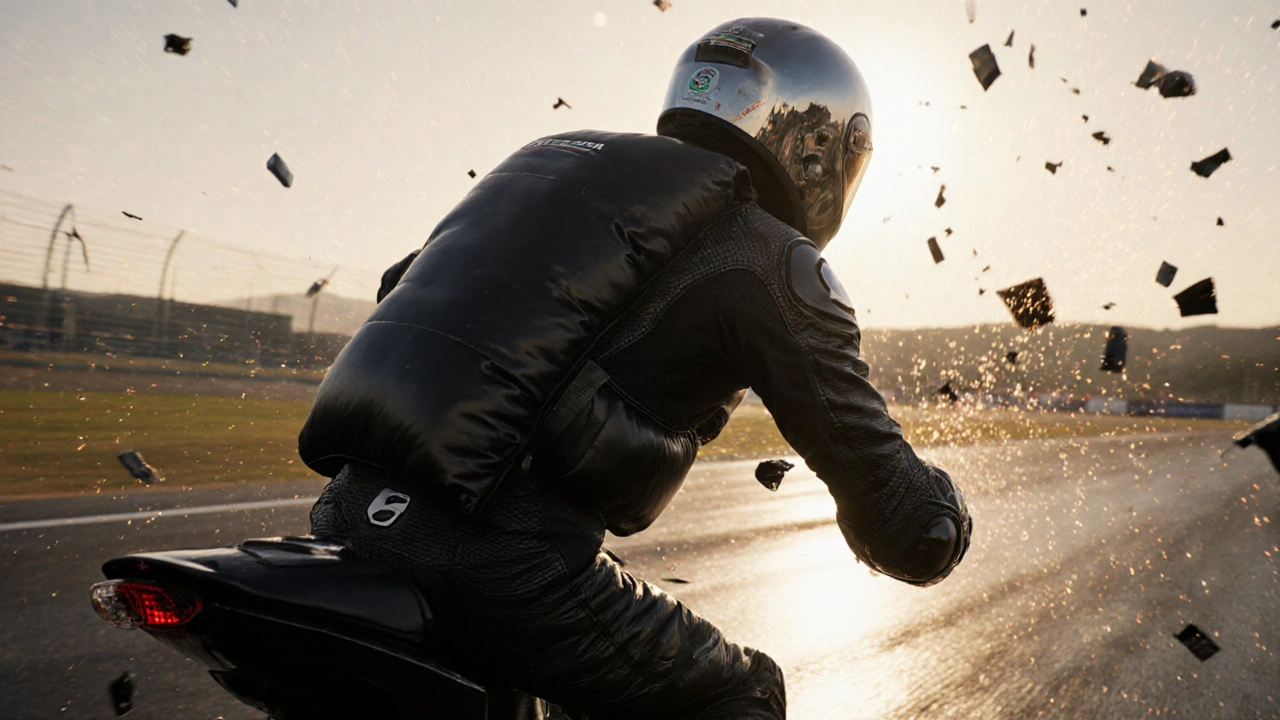


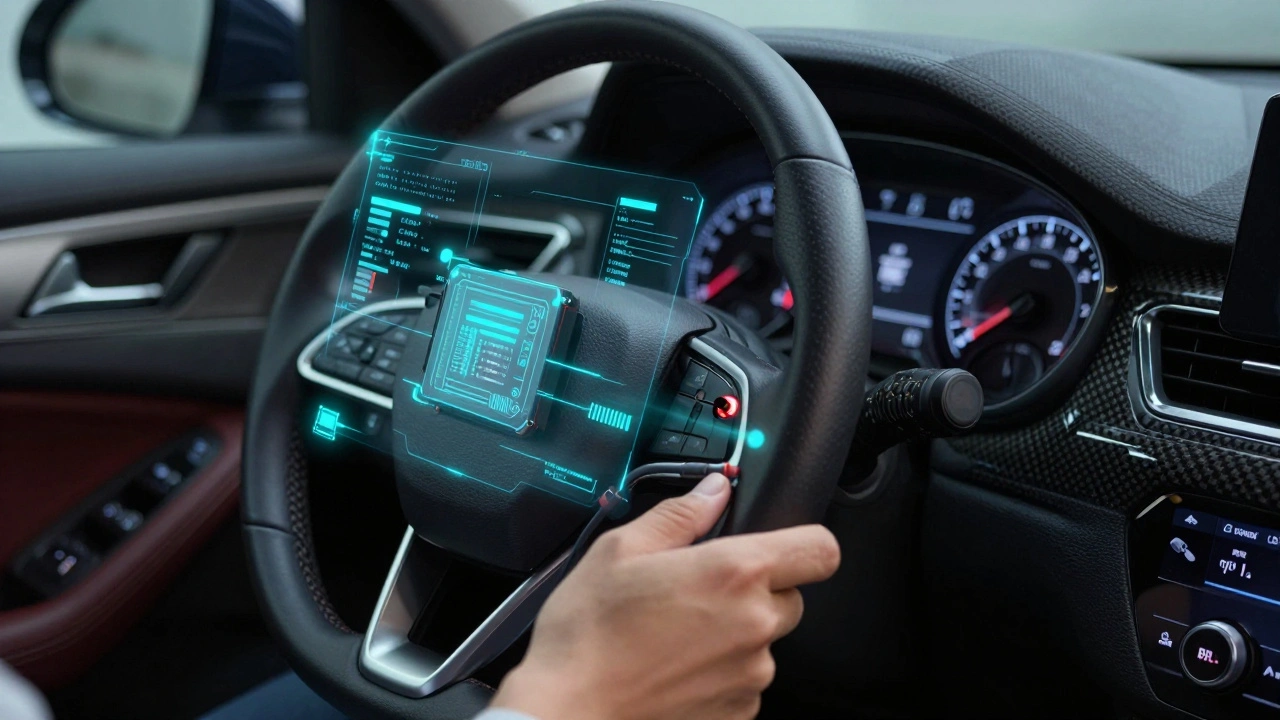
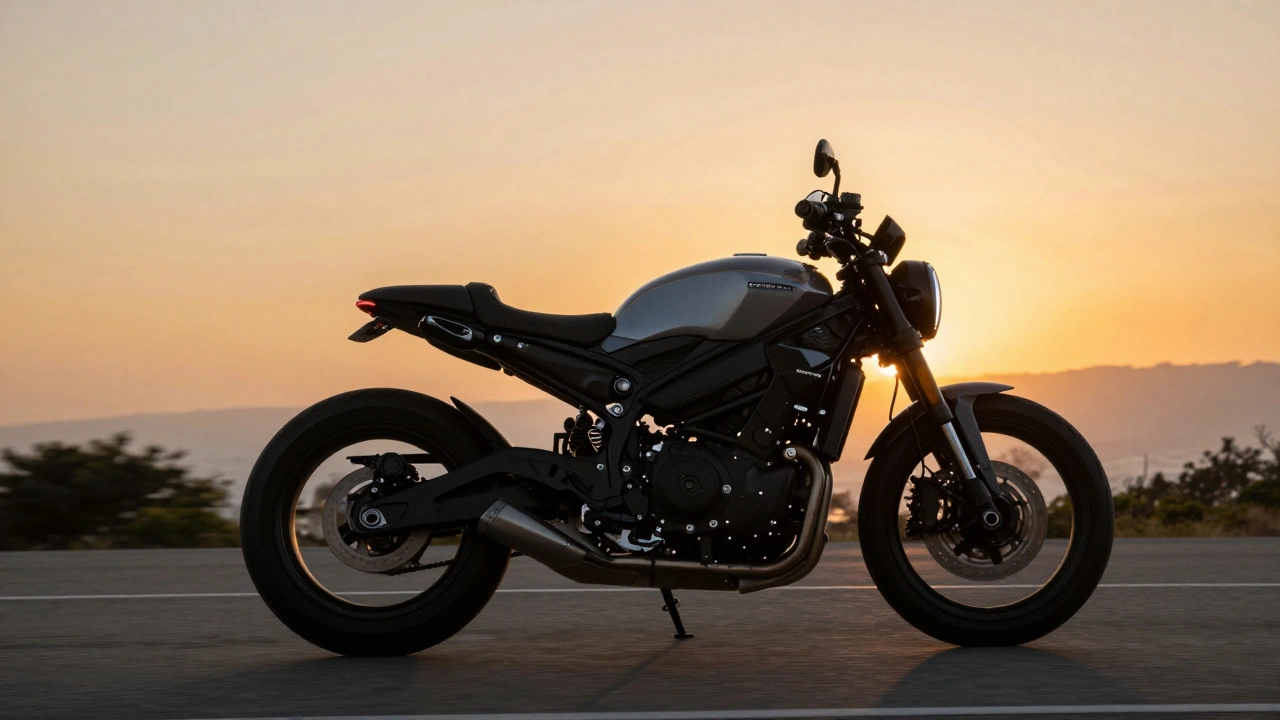

Aafreen Khan
November 21, 2025 AT 09:27Pamela Watson
November 22, 2025 AT 17:57michael T
November 24, 2025 AT 14:51Christina Kooiman
November 25, 2025 AT 05:25Stephanie Serblowski
November 26, 2025 AT 20:05Renea Maxima
November 28, 2025 AT 17:49Jeremy Chick
November 28, 2025 AT 23:30Sagar Malik
November 29, 2025 AT 17:00Seraphina Nero
December 1, 2025 AT 12:21